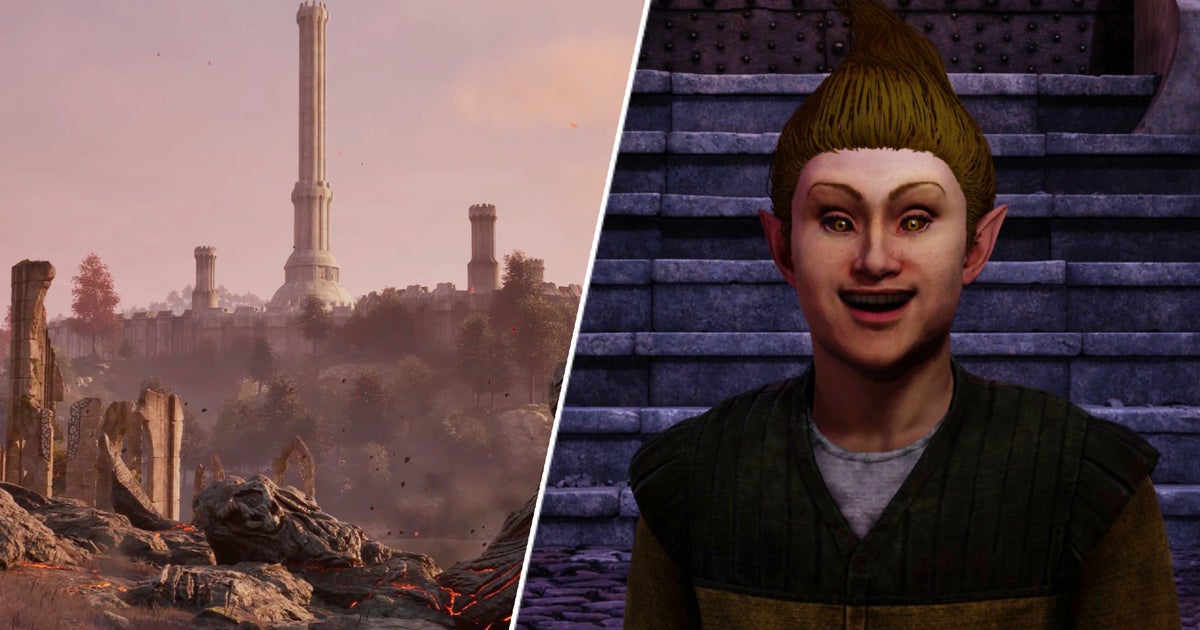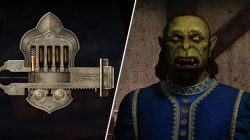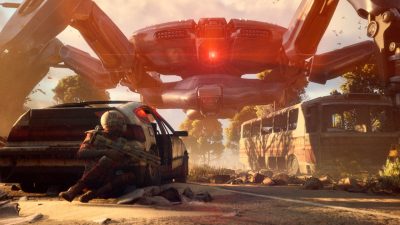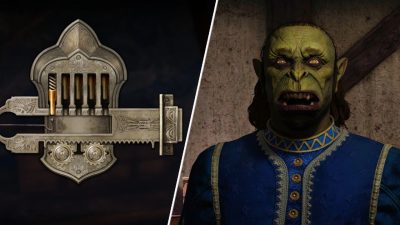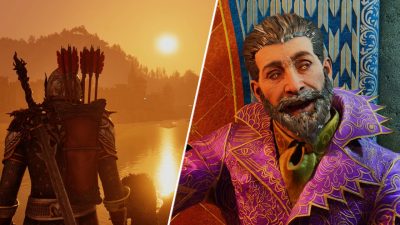Ever since Oblivion Remastered ceased being the worst kept secret in gaming and shadow-dropped into our lives, I’ve been gleefully watching mods for it roll in at a hugely impressive rate.
I was already well aware that the Elder Scrolls/BGS modding community was full of talented folks who’d be driven to figure out how to do all sorts with the latest morsel that’s been thrown their way, but the sheer speed at which they’ve begun to unravel a fresh mystery has still been amazing to me.
While hundreds of folks have been a part of the effort, all contributing in a myriad of different ways, one of the projects that first really caught my eye as was modder Haphestia’s demo for an Oblivion Remastered randomiser, because it was the kind of experimental attempt at something advanced I’d expected to have to wait a while to start seeing. Instead it arrived on April 24, just two days after the remaster was released, and roughly 24 hours after its creator also put out ‘Starter Camp’, the first mod to successfully edit Oblivion Remastered’s worldspace. They also released one of the game’s very first player home mods that same week and recently added pride flags to the Imperial City.
So, I decided to reach out to Haphestia for some insight into how all of these creations came together, as well as what it’s currently like for modders working on the cutting edge to push the boundaries and expand what’s possible modding-wise with Oblivion Remastered. Here’s my conversation with her:
VG247: What drew you to modding Oblivion Remastered, and how did you go about making the Starter Camp and Abandoned House?

Haphestia: I’ve been modding games for years. Decades, now? Huh. I’ve always been fascinated by things that both challenge me and seem potentially within reach, if a bit of a stretch. And a new Bethesda Softworks title is always a splendid arena.
I started by installing the OG Oblivion game, installing the construction set, and throwing down a bed atop some newly placed docks outside the starting dungeon. The bed showed up, floating, but the docks were nowhere to be found, and I realized the game was afoot. The bed proved something was possible, and the missing docks meant there were some new rules in play.
First mission: Create something. What works? I gracelessly plopped objects of various types all around the starting area to see what showed up in game, and what didn’t. I managed to get a player-owned bed, a non-respawning chest, and a light source working, and called that a mod. Second mission: A house. It was impossible, which made it interesting. I saw someone else mention that there were new records on objects that weren’t yet understood – I wish I could remember who to credit this to, but I don’t.
So, I managed to get a hold of a version of xEdit that could show these unknown records, and began studying them. Poking random stuff into them managed to get some things working that didn’t work before, and soon enough we had a handle on how to use them (and a couple days later, fully understood them). I couldn’t make interior cells, but I managed to share a cell with another building by building way out of bounds, off to the side to make a ‘new’ house work, and that was that.
And the war goes on, capturing one new feature at a time. Truly novel interior cells remain a holy grail. We’re close – we can make them now (finally), but we’re trying to make a tool to share this capability with everyone, because it’s non-trivial.

VG247: Generally speaking, how have you found modding the remaster so far, has it been any easier or more difficult to make what you’ve wanted than you might have expected going in?
Haphestia: It’s exactly as difficult as I’d hoped it would be. Well, okay, maybe slightly more difficult. But I wanted a challenge, and it rises to meet the occasion. It’s probably going to be very off-putting to a lot of classic TES modders, because it’s so different. Even to Unreal Engine modders, it does some things in new ways that take time to unravel.
For me, I have a pretty well-rounded skill set so I just keep attacking the problems from different angles until I find a way to accomplish my task. In short, I’m loving it. It’s hard, but enjoyably so. I do predict that in the long term, modding Oblivion Remastered is going to become the pinnacle of Elder Scrolls modding; Unreal Engine is considerably more flexible than Creation/Gamebryo. It can be stretched farther. But the barrier to entry is higher, so it will take time to reach its potential.
VG247: What was the process of creating the randomiser demo like, and where is development of it currently at? Do you have any long-term hopes/plans for your randomiser tool – is the goal to eventually deliver something as ambitious as Elden Ring’s fog gate, gear and enemy randomisers?
Haphestia: I use a framework called Mutagen to manipulate the game records from [the] C# [programming language]. This allows me to make passes on the content procedurally, and generate an ESP with the changes. I had to update it by hand to get compatibility with the new records, and at the present moment, I still have to clean up the output with an xEdit script for now, but it’s just a matter of getting more tools upgraded so I can integrate those parts of the puzzle directly.

At present, I have it shuffling all the load doors. I’ve written the logic for item swaps and randomized item/NPC scales. There’s a lot more I can do, but I’m still on the front lines for expanding the horizons for this game for myself and other modders to be able to do more, because it’s fascinating to explore. As for goals, I haven’t set any specifically just yet. I don’t know what’s possible – other than more. I’ll continue to… do. To create. To challenge myself. And to share the results.
I expect that armour and weapon randomisation should be very achievable. In my Skyrim randomizer, I also randomized hair colours/styles, clothes (for each outfit), and a bunch of other silly stuff. It was a fun time. I’ll see how much of that can be done here – but a lot of it waits on further infiltrating the Unreal side of things. I never released the Skyrim randomiser publicly, and by the time I considered it, someone else had beaten me to it. Figured I’d reserve my spot early this round by sharing some early test output.
VG247: And finally, it’s still early days, but what do you hope Oblivion Remastered modders will be able to accomplish going forwards – are there any other tools/projects you’re keen to see pop up or take on yourself as people continue to push the boundaries?
Haphestia: My primary focus right now is custom cells. That’s a big one that a lot of folks in our Discord community would love, so I’m trying to get it for them. The technology involved in toolworking that should enable a number of other new features as a side effect.
I’m fascinated by the potential this game has. Mixing Unreal Engine into things slows down a lot of what the TES modding community already knows; but brings with it new, never before seen opportunities. Unreal Engine has tons of tech out there for every genre of gaming, and there’s no telling how much of that can be brought into play. I’m excited to see what people do with it.




